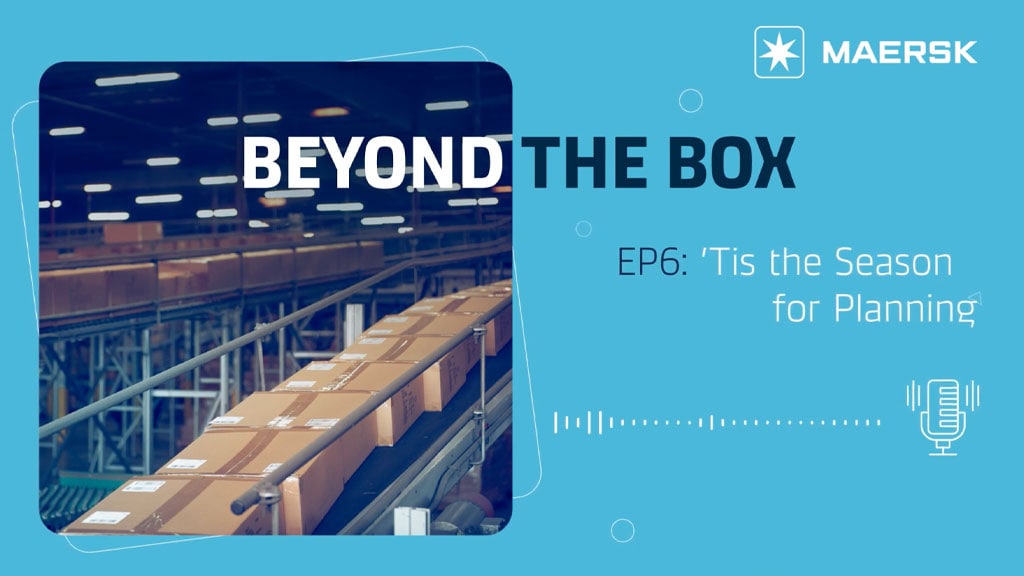Peak season can be the most wonderful time of the year for businesses. According to a recent survey, about 44% expect to take in a quarter of their yearly sales between October and January, while 40% say they’re expecting the period to account for half or more of their yearly sales. But while this time of year continues to carry huge potential for businesses, there have been some developments that have complicated supply chain planning.
Whether your business is catering for Halloween, Diwali, Black Friday, Christmas or anything beyond and in between – the strength of your supply chain can determine your business’ ability to make the most of this holiday season. As Martin Christopher, Emeritus Professor of Marketing and Logistics at Cranfield School of Management in the United States, says: “supply chain compete, not companies”.
That continues to be true, especially in the face of some key changes to both the world of supply chains and peak season.
Holiday season supply planning - what’s different?
Depending on your industry and markets, peak season supply chain planning traditionally started in August and finished around the end of October or early November. The 2023 peak season has revealed some key changes that affect how businesses approach their supply chain planning.
1. Pre-pandemic spending is back
Holiday spending is expected to surpass pre-pandemic levels for the first time in 2023. According to PWC, consumers will increase spending by about 7% in 2023, allocating an average of USD 1,530 for gifts, travel, and entertainment.
At the same time, inflationary pressure is expected to affect their behaviour with the latest Deloitte Holiday Retail Survey finding 72% of consumers expect higher prices and plan to navigate inflation by buying fewer gifts, spending more on gift cards, and seeking out deals. This means that, for some businesses, competition will remain tight.
2. Shopping starts earlier
The combination of cost-of-living concerns and businesses’ offering holiday sales and promotions earlier means 28% of holiday shoppers (and 48% of young adult holiday shoppers) told Gallup they are open to starting their holiday shopping earlier.
Supply chain issues are also partly responsible for the switch to buying earlier. With 2020 and 2021 marked by shortages and stockouts, consumers say they want to be sure they get the products they want, on time. In addition, consumers increasingly take advantage of the discounts and sales at this time of year, such as Black Friday or Singles Day. As a result, the Gallup survey found, 24% would start shopping in September, 17% were expecting to start in October while 39% were holding off until November, and only 20% expect to start their holiday shopping in December.
The trend towards earlier holiday shopping means the traditional peak holiday period has been pushed earlier, with businesses needing to be ready for spikes in activity that start earlier and may also finish earlier.
3. Ecommerce dominates
Buying online has become part and parcel for many consumers globally. In the United States, almost all shoppers (93%) will buy at least some gifts online, while 41% will buy most online during peak season. In Europe, the proportion of eshoppers has grown from 55% in 2012 to 75% in 2022, according to Eurostat. Shopping via social media, known as social commerce, is also on the rise and accounting for a growing percentage of purchases. A recent survey found 17% of consumers had purchased a product directly from a social platform, and this rose to 27% for millennials and 22% for Gen Z.
With ecommerce comes expectations around delivery speed, easy-to-use tracking, and affordable shipping. Business wanting to capitalise on ecommerce need to ensure their ecommerce supply chains are equipped to navigate significant complexity and high consumer expectations.

4. Every day is Christmas (for some businesses)
Supply chains are complex and the changing patterns of peak add to the challenge of getting the right products to the right place at the right time. Retail Dive reports that 40% of businesses have noticed their peak season operations are longer, while 18% say peak season is continuous.
The way peak season plays out can vary hugely from one industry to another. For example, a fruit and vegetable grower and importer like Poland-based Citronex the peaks are less dramatic. “Peak season is always when there is not some other fruit available. So, banana is really good product in the wintertime, because we don’t have so much other choices . . . When customers go to the supermarket in June, July, or August there is a full range of other products they can choose and then they will notice that banana is not number one anymore,” says Citronex’s Chief Operating Officer,
The frequency, intensity, and timing of peak season for your business will make a real difference to your supply chain planning.
5. Digital tools can make a real difference
In 2022, a perfect storm of slower consumer demand and over-compensating for the supply chain disruptions of the previous years, left many businesses with huge inventory gluts. Many of those businesses, still have excess stock coming into the peak season for 2023.
Digitalisation, specifically, digital supply chain management tools, are an important part of the solution and facilitating better inventory management. A 2022 McKinsey survey found 67% of companies use digital dashboards to improve end to end visibility. These companies were twice as likely as others to avoid supply chain disruptions and are well placed to manage the holiday impact on their supply chains. Investing in data, analytics, and generative artificial intelligence (AI) can equip a business to better determine the levels of stock required, where, and when.
Head of International Supply Chain at Kmart Australia, Deepak Menon, says: “The challenge is always to manage the peaks and valleys of the product.” He adds: “We have made significant progress within Kmart is to bring up digital tools that will help us in this inventory planning and flow optimisation . . . We are trying to come up with tools which can spit out plans with about 95% data accuracy. Now that definitely improves our space planning within our warehouse and also we have a tool that looks into container forecasting, which tells us precisely two months out how much space we need exactly in each ship. All this helps us to pack and utilise our warehouse accurately, as well as with resource-planning in the warehouse, resource and space-planning in the ship, so that we can stack the ship, flow the products and then it all leads to higher reliability at the store.”
To find out more about peak season planning listen to the latest episode of the Beyond the Box podcast.
重要な業界最新トレンドが必要でしょうか?
完了です。ようこそ!
申し訳ございません。お客様のお問い合わせの送信中にエラーが発生しました。
フォームの入力内容について、必要な情報がすべて正しく入力されていることをご確認ください。問題が解決しない場合は、サポートチームにご連絡ください。
重要な業界最新トレンドが必要でしょうか?
このフォームからご登録いただくと、お客様のメールボックスに直接最新の情報が配信され、真のインテグレーテッドロジスティクスの世界に足を踏み入れることができます。ニーズに合わせて厳選された記事でトレンドをしっかりキャッチし、クリックすることにより関連するビジネス情報も取得できます。配信はいつでも停止できます。
I agree to receive logistics related news and marketing updates by email, phone, messaging services (e.g. WhatsApp) and other digital platforms, including but not limited to social media (e.g., LinkedIn) from A. P. Moller-Maersk and its affiliated companies (see latest company overview). I understand that I can opt out of such Maersk communications at any time by clicking the unsubscribe link. To see how we use your personal data, please read our Privacy Notification.
By completing this form, you confirm that you agree to the use of your personal data by Maersk as described in our Privacy Notification.














